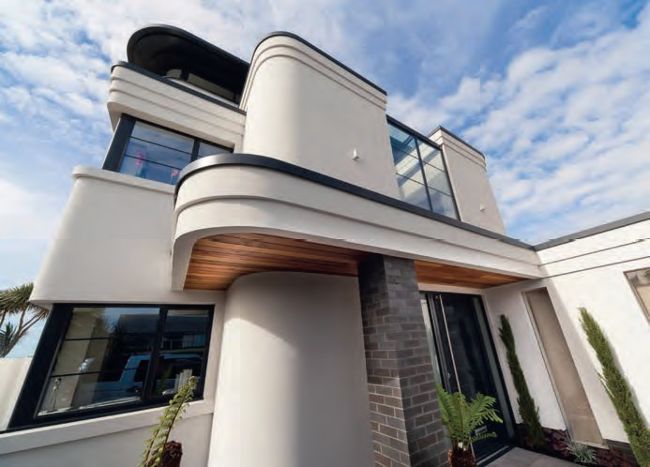UNDERSTANDING modern render systems
Tim Doherty takes a closer look at the options for adding a rendered finish to your external walls
Tim Doherty

Above left: A Parex render system has been used on this coastal house to create a smooth finish for the curved facade
T he manufacturers of building materials are constantly coming up with new ways of blending minerals and chemicals together to give us superior products to use on site – sometimes for easier application, but also with improved performance and lower maintenance characteristics. Render is one such product; however, the technical terminology often used for modern systems leaves many self-builders and renovators feeling confused. Hopefully the following pages will help to shine a light on the choices and their main benefits.
What are the options?
Render is a coating applied to a building’s external walls – basically, the smooth, usually white surface on the outside of a house. Traditionally, a mix of lime, water and an aggregate (such as sand) created a flexible and breathable covering. This method hasn’t been particularly popular in the last few decades, but has recently experienced a bit of a resurgence; it’s certainly still used for period property conservation. Conventional render is made from a cement, sand and aggregate blend, but many modern products are cement free.